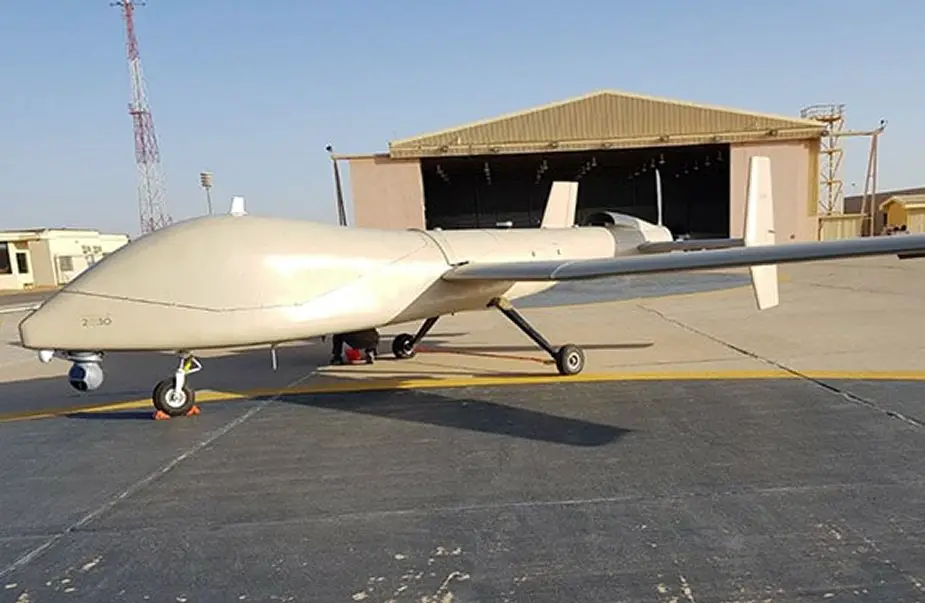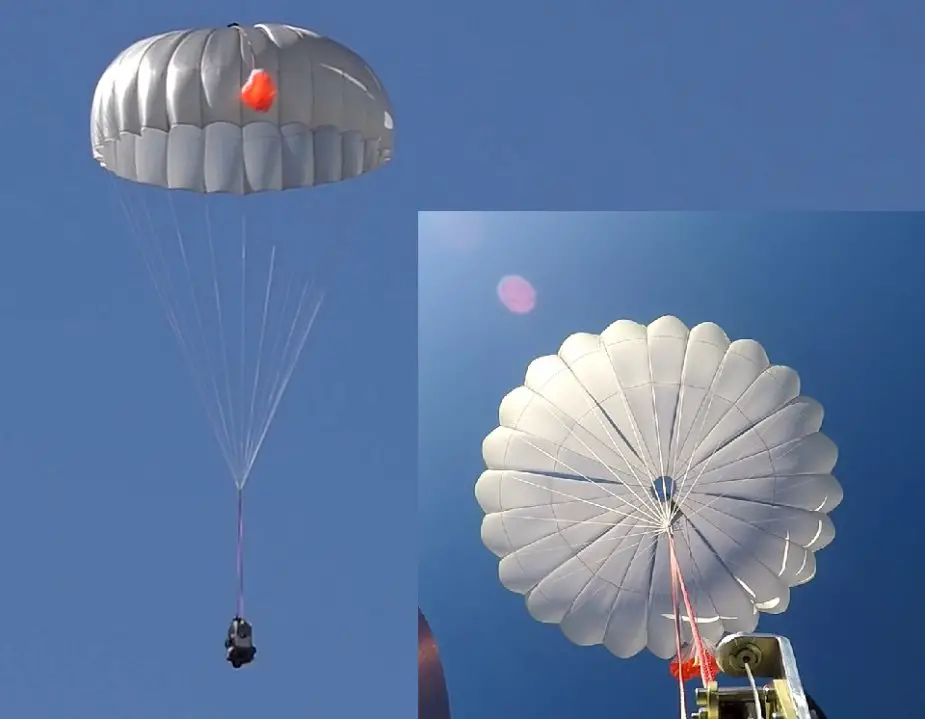Breaking news
UAVOS Saker-1C MALE UAS developed with KACST, new parachute system proved efficient.
The Saker-1C Medium Altitude Long Endurance (MALE) Unmanned Aerial System (UAS) project, a successful partnership of UAVOS and King Abdulaziz City for Science and Technology (KACST), Saudi Arabia, includes development, flying and maintenance, UAS Weekly reports.
Follow Army Recognition on Google News at this link

Saker-1C UAS (Picture source: UAVOS)
UAVOS and KACST are working together to develop the next generation of Saker MALE UAS family – Saker – 1C UAV/UAS. The goal is to redesign and improve UAS features extending from engineering to operation. The UAVOS and KACST effort is focused on utilizing advanced manufacturing technologies and integrating next-generation capabilities including state-of-the-art autonomy, navigation, communications, sensor processing and system of counter electronic warfare.
Using the most progressive technologies developed by two companies to date, the Saker – 1C is a versatile aircraft capable of carrying diverse payloads such as SAR imagery and coherent change detection, Gyro Stabilized EO/IR Gimbal, Digital Video Data Link Tactical UAV.
The innovative and technologically sophisticated Saker – 1C aircraft is designed to perform long-endurance surveillance, communications relay, search & rescue operations and so on.
The aircraft’s payload capacity features have been increased up to 660 lb (300 kg) in comparison to Saker – 1B, while also offering 100% more fuel capacity via its retrofitting long-endurance wings with greater internal fuel capacity. Equipped with fuel tanks for 30 hours maximum endurance, the Saker – 1C is able to reach an altitude of 23,000 feet (7000 m), a maximum speed of 110 knots. Due to adding fowler flaps and interceptors lift augmentation capability has been improved.
Through improved manufacturing technologies, the unmanned aircraft has a stronger body structure, allowing for quick and easy maintenance without adding to its weight. The dry weight of the aircraft has been reduced до 600kg due to using modern composite technologies.

UAVOS parachute system for UAS/UAVs(Picture source: UAVOS)
New UAVOS parachute system for UAS proved effective
UAVOS has successfully tested its new two-stage parachute system. The new parachute system design is aimed at providing slow descent of the UAS at high speed. It includes two parachutes - the pilot chute and the main chute used to slow and stabilize the UAS. The decrease in the load speed on the UAS occurs due to the main chute opening delay function when the pilot chute opens first. The parachute system is designed for UAS with speeds of up to 280 mph (450 kph) and a weight of up to 110 lb (50 kg).
The pilot chute allows safe slow descent of the UAV during the main parachute deployment, as well as to open up the main chute at a minimum altitude.
After landing, the group of the main parachute lines is automatically unfastened to collapse the canopy of the main chute and releases after touchdown to avoid dragging the aircraft along the ground. Unfastening is carried out by the lock of a three-step release:
1 stage - Opening the pilot chute
2 stage - Opening the main chute
3 stage - Release of the group of lines of the main parachute
“In the aircraft safety developments, saving an entire aircraft through a deployable parachute system is a crucial thing,” said Aliaksei Stratsilatau, CEO and Lead Developer of UAVOS. These trials have generated an amount of data that allows us to quantify the performance of the parachute system for future missions. Computer modeling cannot capture all the complexities. Parachutes encounter turbulent and dynamic airflow, which is almost impossible to replicate with computers. The only way to get a handle on all the possibilities is testing.”



















